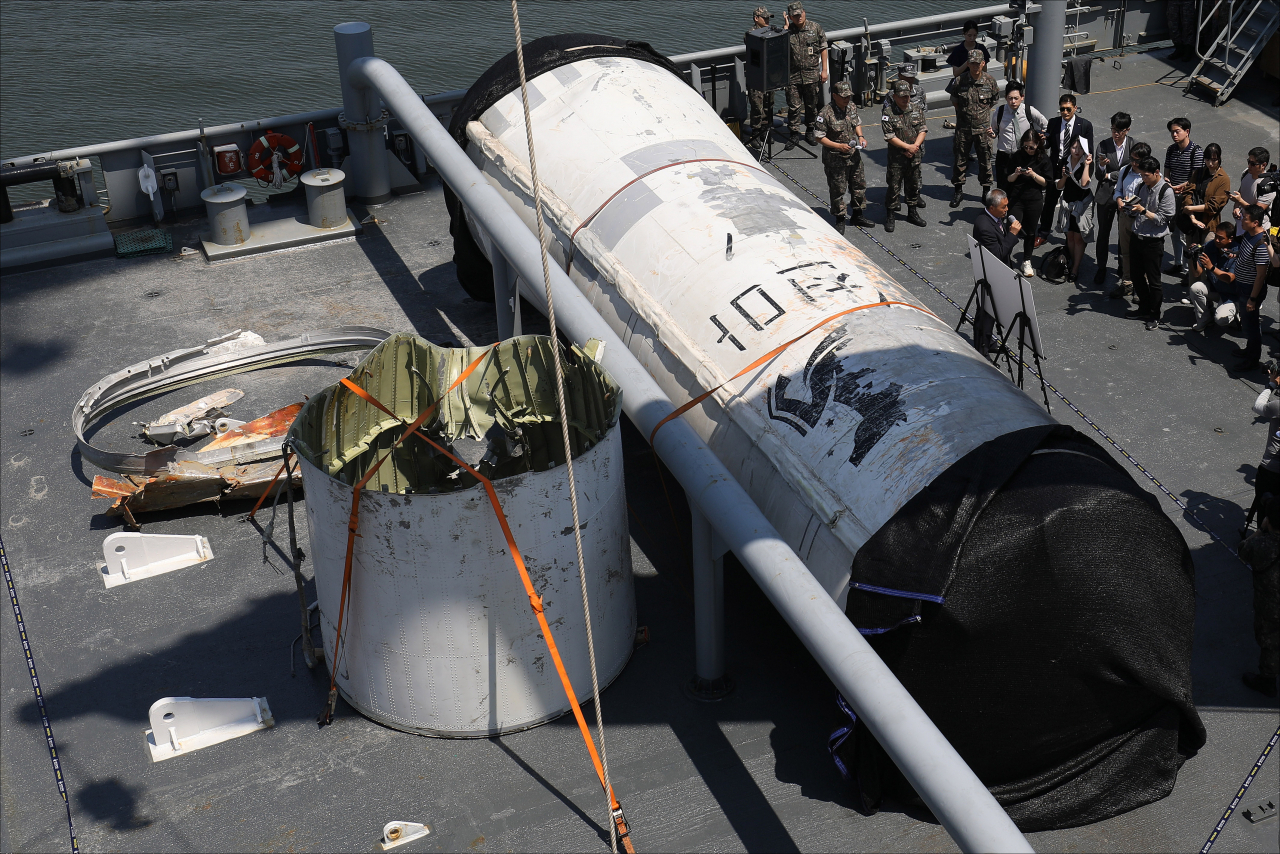 |
The South Korean military reveals the recovered parts of North Korea's ill-fated |
South Korea and the United States have assessed that the reconnaissance satellite launched by North Korea in May has "no military utility" because its imaging equipment lacks the required resolution, South Korea's Joint Chiefs of Staff said Wednesday.
The JCS announced the results of the analysis conducted on the debris of North Korea's spy satellite and space launch vehicle that the South Korean military salvaged in the West Sea.
"The major components of North Korea's space launch vehicles and satellite were salvaged through the operation and thoroughly analyzed by South Korean and US experts," the JCS said in a statement.
South Korea's specialized institutions, including the Agency for Defense Development, collaborated with US agencies such as the Defense Intelligence Agency, operating under the auspices of the US Department of Defense, conducted the analysis of the retrieved launch debris.
"As a result, they have evaluated that they have absolutely no military utility as a reconnaissance satellite," according to the JCS.
The evaluation by Seoul and Washington suggests that the satellite launched by Pyongyang does not meet the criterion of possessing a minimum spatial resolution of one meter.
The spatial resolution is a crucial factor for a reconnaissance or spy satellite when assessing its military utility.
A spatial resolution of 1 meter implies that objects smaller than 1 meter will not be distinguishable or discernible in the satellite imagery.
When the spatial resolution of a reconnaissance satellite is better than 1 meter, such as those with a 70 cm resolution, it enables the identification and analysis of objects such as buildings, vehicles, larger infrastructure and prominent features on the ground.
But Seoul and Washington have decided to withhold further information on their analysis of the launch debris.
The Korea Herald has learned that Seoul and Washington were able to acquire "significant" data from the salvaged debris, including the second stage of North Korea's space launch vehicle that was retrieved by the South Korean Navy on June 15.
But they have concluded that revealing the results of the analysis could potentially benefit North Korea or prompt North Korea to take measures to prevent future salvage operations.
North Korea launched a space launch vehicle called Chollima-1, which was reported to carry a military reconnaissance satellite named Malligyong-1 on May 31. The launch took place in the Tongchang-ri area of North Pyongan Province.
But after the launch, North Korea's launch vehicle encountered an abnormal flight trajectory and crashed into the waters around 200 kilometers west of the South Korean island of Eocheongdo in the West Sea.
The South Korean military initiated a search and salvage operation, mobilizing the Navy's salvage and rescue ships, aircraft and deep divers. The operation concluded on Wednesday.







![[Today’s K-pop] Blackpink’s Jennie, Lisa invited to Coachella as solo acts](http://res.heraldm.com/phpwas/restmb_idxmake.php?idx=644&simg=/content/image/2024/11/21/20241121050099_0.jpg)